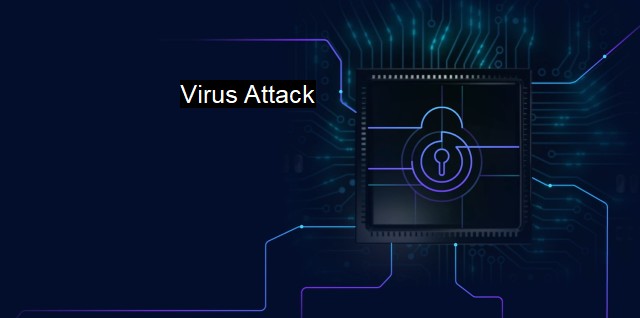What is Virus Attack?
The Growing Threat of Virus Attacks in Cybersecurity and the Importance of Antivirus Software for Protection
One of the most commonly encountered phenomena is a virus attack. A virus in this context refers to a piece of malicious software, also known as a malware, that invades computers and other digital systems with the primary goal of compromising or disrupting their regular functioning. A virus attack, therefore, is essentially this invasion process that not only grants the virus access to the system but also facilitates the implantation of the offensive code upon which the harmful effects of the virus rest.Computer viruses operate much like human viruses. They intrude on healthy systems and use their resources for survival, consequently causing the infected system to exhibit abnormal behavior or suffer damage. A virus attack usually leaves telltale signs such as system crashes, slow performance, unsolicited pop-up browser windows, unexpected system restarts, or programs spontaneously starting and stopping.
Cyber attackers weaponize viruses in various ways to deadlock systems, spy on users, tamper with data, or gain unauthorized access to resources. The know-how of these digital hooligans puts into perspective the extent of the menace that computer viruses represent. With the mention of a 'virus attack', thoughts about significant financial losses or breaches of sensitive information immediately come to mind due to numerous notorious virus attacks in the annals of cybersecurity.
Several high-profile virus attacks cemented the notoriety of virus attacks. Examples include the ILOVEYOU attack, which caused nearly $10 billion in damages globally, and WannaCry ransomware, which affected hospitals, banks, and telecommunications companies across 150 countries. Such attacks show the potentially catastrophic capacity of viruses, the havoc they can wreak on systems, and, by extension, societies heavily reliant on digital networks.
While these damages might seem insurmountable, antivirus technologies offer solace. Antivirus software acts as the primary line of defense against virus attacks by providing comprehensive protection against an array of malware threats including viruses, worms, Trojans, ransomware, and other malicious programs. They do so by using a variety of strategies including real-time scanning, firewall protection, intrusion detection systems, and regular software updates.
Real-time scanning involves continuous monitoring of computers to detect and halt malicious activity. As new files or software are added to a computer, an antivirus checks them against its virus database, which contains patterns characteristic of known malware. Any files found to match these patterns are scrutinized and possibly quarantined or eliminated.
Firewall protection serves as additional fortification, effectively discerning and assisting in the prevention of any unauthorized incoming or outgoing network traffic. Intrusion detection systems alert users when a system or network is under or has undergone an attack by noting suspicious patterns or policy violations.
Software updates are vital to maintaining the potency of antivirus software. Cybercriminals consistently generate new viruses that can elude firewalls or even disable antivirus software. Keeping the antivirus software updated ensures that it can recognize and combat emergent threats.
Despite the near-herculean effort of devising effective countermeasures against computer viruses, absolute safety remains elusive due to the ever-progressing sophistication of malicious programs, social engineering, and hard-to-track zero-day exploits. understanding what a virus attack is, the forms it takes, and how it can harm computer systems helps uphold the importance of maintaining strong cybersecurity measures and protocols.
Combating a virus attack is hardly a one-man mission. It entails the collaboration of a global community of tech users, corporations, and cybersecurity firms to ward off the magnified risks associated with business interconnectivity and our increasing reliance on digital technology. Future cybersecurity feels reminiscent of an age-old adage; we are indeed stronger together against this common foe. But while we wait and prepare for the next big virus attack, reinforcing existing cybersecurity measures and protocols, creating awareness about them, and having an active antivirus are advisable steps every individual or organization can take to ensure they stay one step ahead of the relentless scourge that is a virus attack.

Virus Attack FAQs
What is a virus attack?
A virus attack is a term used to describe an incident where a computer system is infected with malicious software designed to cause harm or damage.How can I protect my computer from virus attacks?
You can protect your computer from virus attacks by installing a reputable antivirus program, keeping your operating system and software up-to-date, avoiding suspicious emails or links, and being cautious when downloading files from the internet.What are the consequences of a virus attack?
The consequences of a virus attack can vary depending on the severity of the attack. It can result in data loss, system crashes, and other damages that can affect your computer's performance. Additionally, it can compromise your personal and sensitive information, leading to identity theft or financial loss.What should I do if my computer is infected with a virus?
If your computer is infected with a virus, you should immediately disconnect it from the internet to prevent the virus from spreading further. Then, run a full antivirus scan to detect and remove the virus. If the virus has caused damage to your computer or personal data, you should seek help from a professional cybersecurity expert.| | A | | | B | | | C | | | D | | | E | | | F | | | G | | | H | | | I | | | J | | | K | | | L | | | M | |
| | N | | | O | | | P | | | Q | | | R | | | S | | | T | | | U | | | V | | | W | | | X | | | Y | | | Z | |
| | 1 | | | 2 | | | 3 | | | 4 | | | 7 | | | 8 | | |||||||